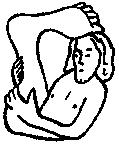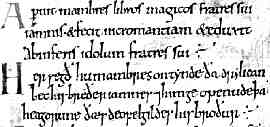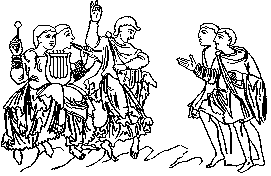 |
|
Travel
Literature |
|
Travel
literature is a popular genre of published work today. However, it is
rarely a dispassionate and scientific recording of conditions in other
lands. As a literary genre, it has certain conventions. Readers are generally
seeking the exotic, the other, the different in the places they explore
in literary mode. We want to learn about the headhunters of Borneo, not
the oil rig workers; the wildebeest and gazelles of Africa, not the various
species of rats; the temples of Greece, not the takeaway hamburger restaurants.
We would rather see the inhabitants of a Swiss mountain village dressed
in anachronistic clothes that they wear for an annual culture festival
than in their jeans and T-shirts. We may also be seeking our own origins
and trying to tie our culture and customs to a sense of place. Australians
and Americans lap up literary tours of the historic monuments of England
and Europe. We mostly are not terribly interested in their football teams
or descriptions of the London Stock Exchange. We demand disjunctions of
time, place and continuity, not accuracy. |
|
Medieval
writing about travel and foreign places also had its conventions. Like
so much literature in the middle ages, it drew much from its own inbuilt
literary culture, which included embellishing the plain observations of
travellers with material which had been handed down through chains of
copying from Classical authors or oral tradition. Factual accounts could
be larded with fiction and fantasy drawn from oral tradition or other
literary sources. As with other genres, material from earlier authors
was borrowed, reorganised, reassembled and presented anew. |
|
Strange
creatures, like one legged anthropomorphs who could use their single large
foot as a parasol, escaped from Classical literature of the exotic and
into the writings, visual arts and psyches of medieval people. |
|
|
It
is sometimes asserted that medieval people did not get about much. It
is undoubtedly true that a great many people, possible most ordinary rural
or town dwellers, may have been born, lived and died in the same place.
However, there were groups of people who did travel, and given the conditions
of the time, they travelled most adventurously and sometimes very far.
Soldiers went across the country or to the exotic eastern Mediterranean.
Traders from the Vikings to the merchant adventurers of the later middle
ages voyaged to many exotic ports. Pilgrims undertook journeys to the
nearest popular shrine, or headed off to Compostella or the Holy Land.
Bishops went to Rome and papal emissaries went out to check out the remote
corners of Christendom. Missionaries inserted themselves into potentially
hostile parts of Europe in the early middle ages, and later practitioners
ended up travelling as far as China. The craftsmen who worked on the great
Romanesque and Gothic buildings were an international travelling elite.
The marriages of royalty tended to be diplomatic affairs between competing
aristocrats in different countries, so that courtiers, servants and followers
of the medieval glitterati moved from country to country. The world was
a completely different size, depending on who you were and what your job
was. |
|
|
Royal
travel of the 14th century, after a marginal illustration in the Luttrell
Psalter. |
.|
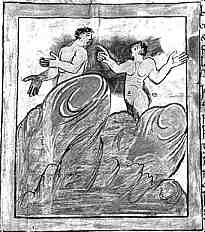 |
Outside
the known world is the unknown, which has always contained marvels. They
seem to inhabit a marginal area just beyond the edge of the known. Peculiar
creatures and bizarre tales from beyond the fringes of the Classical world
were drawn into the literature of the exotic of the middle ages. A work
entitled Marvels of the East survives in
several Latin manuscripts
and one bilingual Latin/English work, collecting together many of these
oddities. Strange things lived in the east because to the west, once you
got past Ireland, there was only water. Probably a few Irish and Scandinavian
adventurers knew better. |
|
An
illumination from an 11th century copy of Marvels
of the East (British Library, Cotton Tiberius B V). These two naked
figures are not as peculiar as some, except that one of them is supposed
to be dead. By permission of the British Library. |
|
| A
sample of the bilingual text from the above example. By permission of the
British Library. |
|
These
characters from the fringes could be recruited to enhance any travellers'
tales that were beginning to suffer from tedium. It is fascinating to
discover that some of the stock characters, including people with tails
or cannibals who devoured their young, are part of what one might call
ethnic slander across continents and centuries. Earnest Dutch colonial
officers in pith helmets solemnly, if not credulously, recorded these
very stories in 19th century Borneo, told by native peoples against their
enemies who always lived just that bit further up the river. The supernatural
freaks of medieval art and literature may have had their origins in ethnic
lies told by groups at the edge of the then known world. |
|
|
|
While
literacy was strongly tied to the Christian church, particularly in the
earlier part of the middle ages, the literature of travel was not a doctrinally
significant text which must be copied meticulously and without error.
The transmission of some of this material is more akin to what happens
in oral culture, and in many cases was derived from it. Alteration of
a text to produce a good story, or reworking texts to mingle fact and
fiction, was no doubt a legitimate tool of trade of the oral storyteller.
It also appears in the written literature of travel, not as a corruption,
but as part of the art. |
|
It
is worth pondering what is missing from medieval travel literature, because
literate culture was confined to particular social classes. If artisans
had scribbled out their travel diaries with such titles as A Stone
Carver's Tour of Europe then art historians and archaeologists would
not have had so much to do. But they didn't, and so those who speculate
on the organisation of medieval building and craftsmanship and the spread
of influences must rely on close examinations of the works themselves,
the writings of scholars on theoretical matters which might have some
bearing, and such mundane documents as building accounts. |
|
|
Much
academic ink has been expended on analysis of the program of carving at
Chartres Cathedral. |
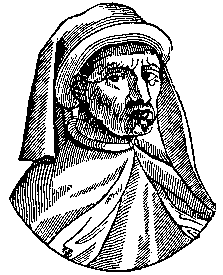 |
A
certain fascination with the remote and exotic also meant that, to a large
degree, the depiction in writing of the author's own native land was surprisingly
neglected. Chaucer's pilgrims clattered along the road to Canterbury,
but they told yarns rather than noting what they saw along the way. The
writers of chronicles
made occasional observations about the country, but it is not until the
late 15th century when the printer Caxton filleted, compiled and condensed
some of this material into his printed work, The
Description of Britain, that there is some sort of coherent envisagement
of the land. |
|
Caxton |
| After
the Reformation, the drastic effect of the dissolution of the monasteries
and the confiscation of church property led to an interest in the topography
of the country, based on an awareness that the massive remains of a recently
lost past were still standing the landscape. Antiquarians of the 17th, 18th
and 19th centuries created a whole new genre of historical travel literature,
but only after the first heroic attempt to record the rapidly decomposing
splendour of the middle ages was made in the early 16th century by a man
called John Leland, who went mad and died in the attempt. But that is another
story. |
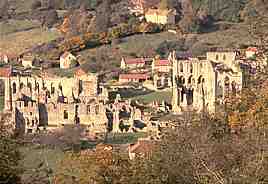 |
The
beautiful monasteries like Rievaulx, tucked into its remote location in
one of the most scenic parts of Yorkshire, only received the attention
of travel writers after they were deserted and ruined. |
|
continued
 |
 Categories
of Works Categories
of Works |
|
 |
 |
 |
 |
 |
